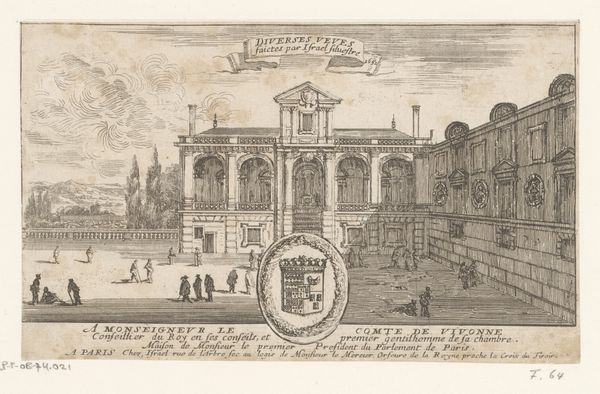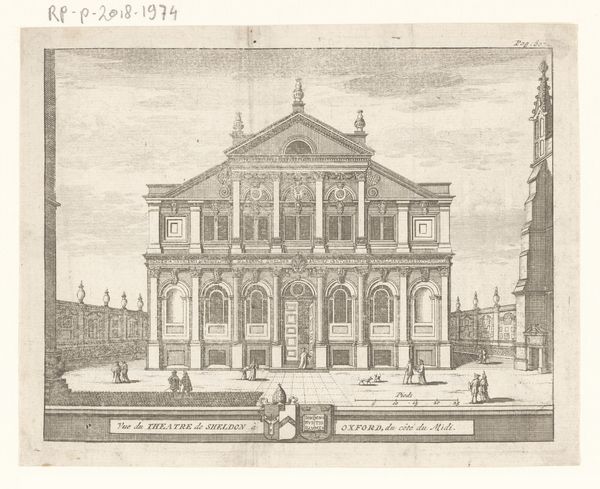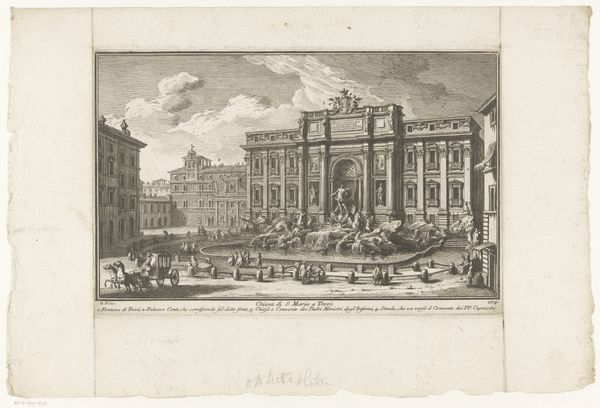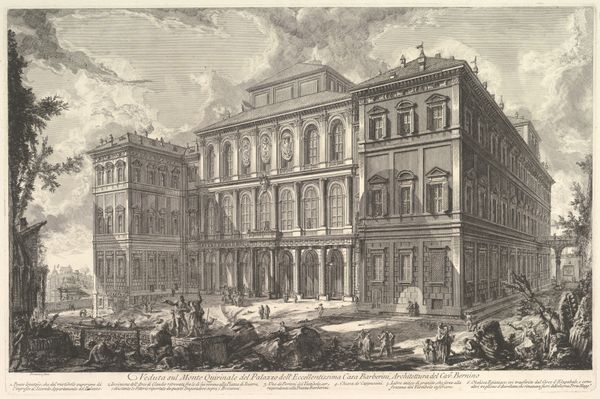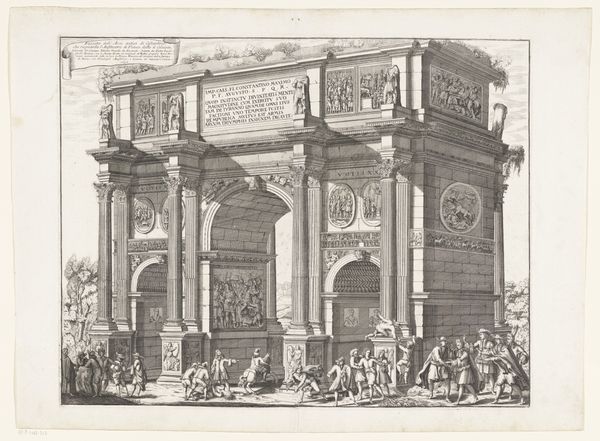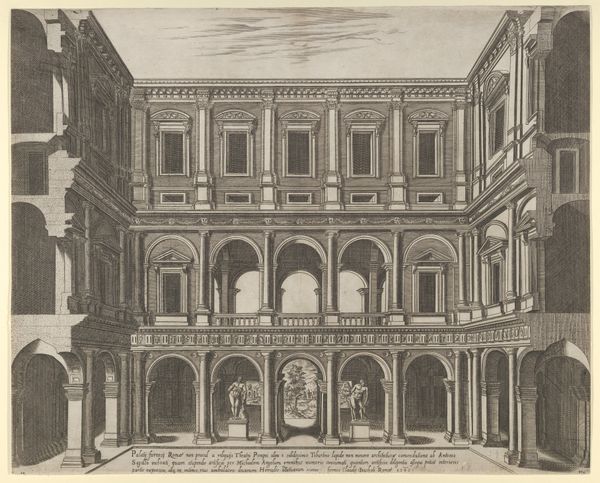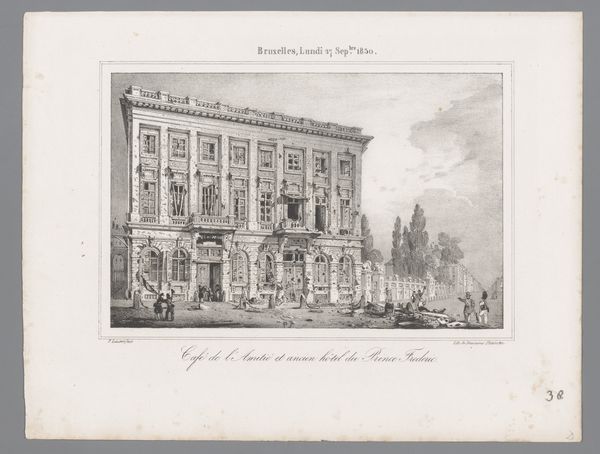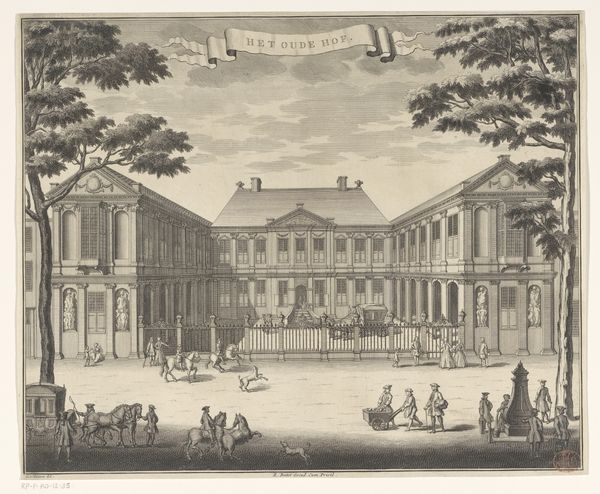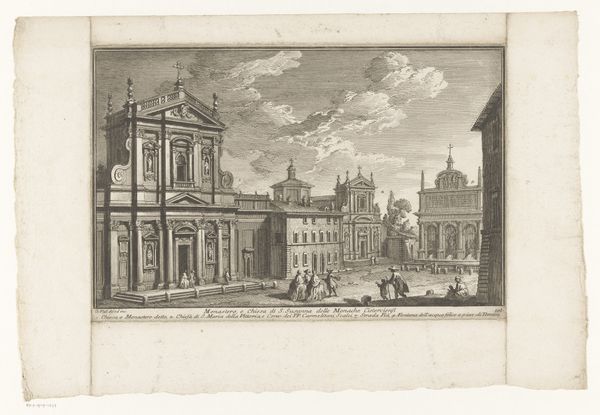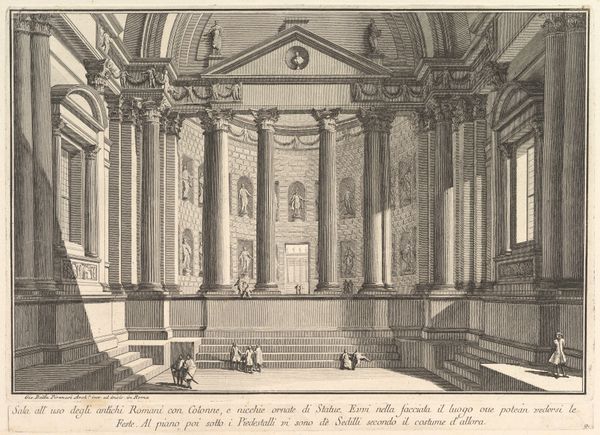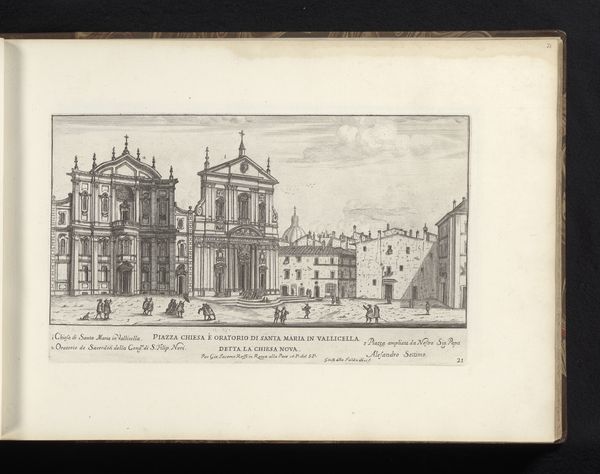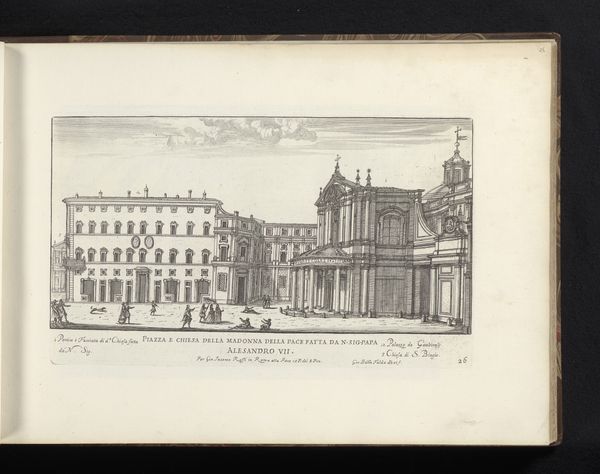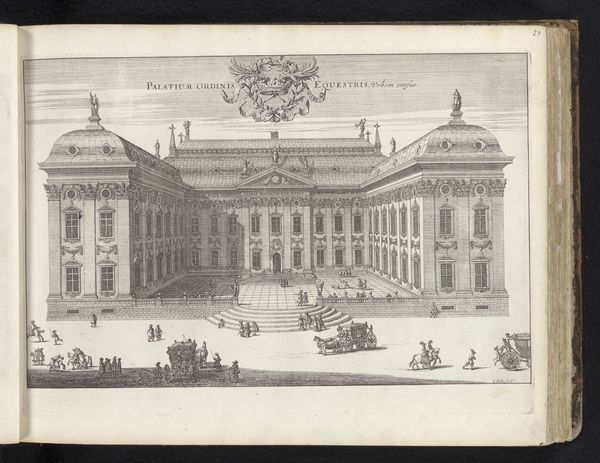
print, etching, engraving, architecture
#
baroque
# print
#
etching
#
etching
#
cityscape
#
engraving
#
architecture
Dimensions: 7 1/4 x 11 7/16 in. (18.42 x 29.05 cm) (plate)9 1/4 x 11 15/16 in. (23.5 x 30.32 cm) (sheet)
Copyright: Public Domain
Editor: Here we have Luca Carlevarijs' "View of the Confraternity of St. Rocco," an etching from the mid-18th century. It's incredible to see how much detail he packed into a print! I'm struck by the sense of civic pride emanating from this detailed cityscape. What do you see in this piece? Curator: Well, the facade itself is fascinating. Think of the careful placement of each architectural element—the columns, the windows, even the implied weight and mass communicated by the shading. What do these repeated shapes, this imposing structure, evoke for you? Editor: A sense of established order, perhaps? A powerful institution. But there are so many people; I see all different kinds of gatherings in front of this architectural icon. Curator: Exactly. St. Rocco was, and still is, a figure associated with protection from plagues. Confraternities devoted to Rocco provided aid during epidemics, playing a vital social role. So the image suggests the intersection of faith, community, and even public health. How does understanding this context shift your perspective of the scene? Editor: I see it! The activity isn't just random; these gatherings hint at a community reliant on faith and mutual support in times of crisis. The building itself is a visual reminder of that reliance. So, would you say the artist chose this view specifically to express stability and continuity through the symbolism of architecture? Curator: Indeed. Carlevarijs highlights the cultural memory embodied in the confraternity and its place in Venetian society. It's a potent combination of place, people, and their shared history, all captured through the symbolic weight of this building. Editor: I had been drawn in by the surface qualities of line and form, and now, with this new cultural lens, I can see how its visual vocabulary reinforces historical ideas. Thank you for opening my eyes to the historical roots of this print. Curator: My pleasure. Remember that every line and shadow can be imbued with layers of historical and symbolic significance, creating enduring meaning over time.
Comments
minneapolisinstituteofart almost 2 years ago
⋮
Around 1700, landscape painter Luca Carlevarijs became the first artist to popularize picturesque views of Venice. With a penchant for mathematics and perspective, Carlevarijs depicted landmarks from viewpoints at the level of the street or canal so viewers could enjoy a realistic experience of the city. These two prints are from a series of more than 100 etchings of Venetian sites. The Rialto Bridge pictured by Carlevarijs was completed in 1590, and stands today. An important thoroughfare near the city's great market, the bridge links the two banks of the Grande Canal, and thus the commercial and political zones of the city. Its wide steps and single-span design accommodate busy marine and pedestrian traffic. As shown by Carlevarijs in his etching of the Confraternity of St. Rocco (Scuola di S. Rocco), paintings were often exhibited on the exterior walls of the building, which also houses the greatest cycle of paintings by Jacopo Tintoretto (1519-94).
Join the conversation
Join millions of artists and users on Artera today and experience the ultimate creative platform.
